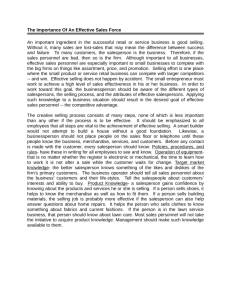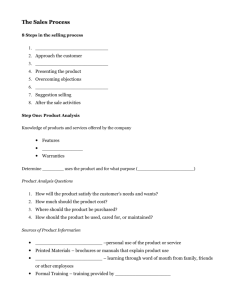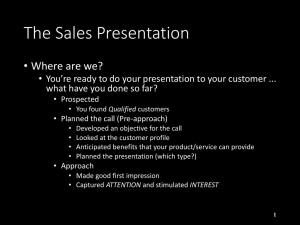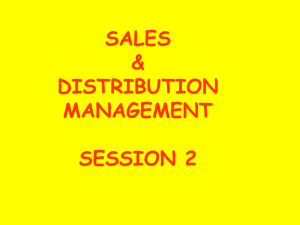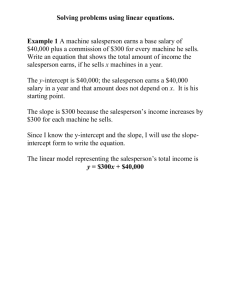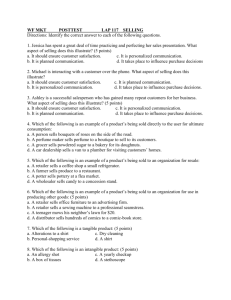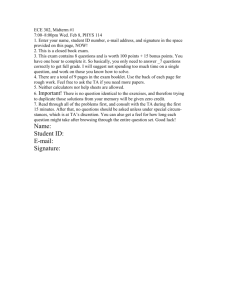y - SchoolNotes
advertisement
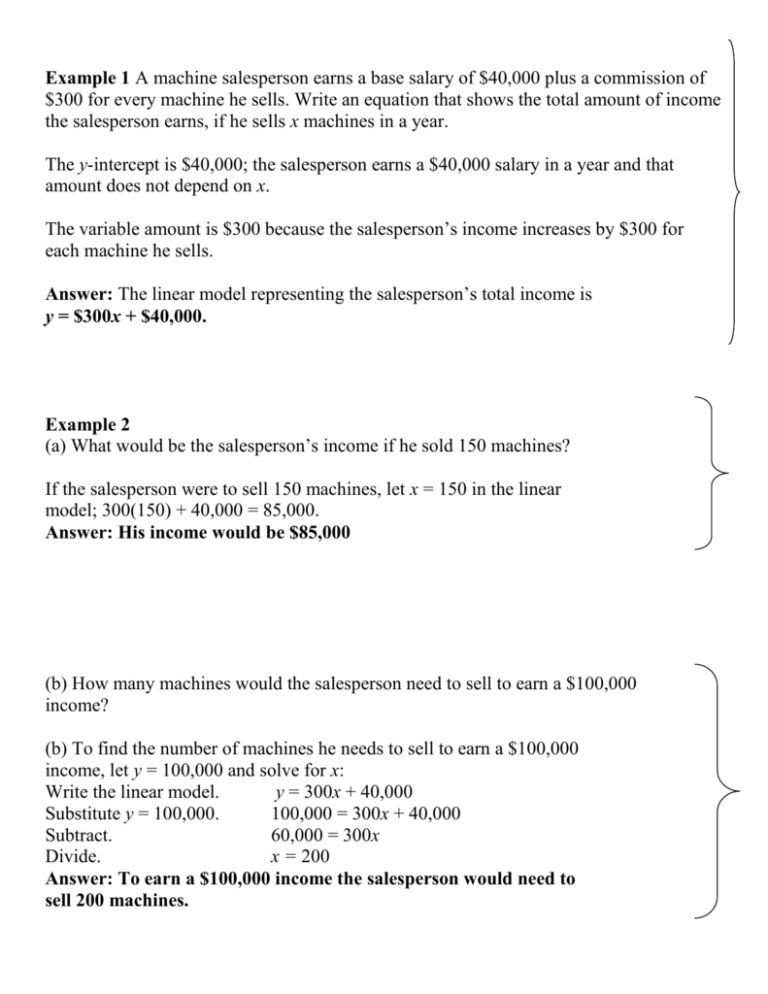
Example 1 A machine salesperson earns a base salary of $40,000 plus a commission of $300 for every machine he sells. Write an equation that shows the total amount of income the salesperson earns, if he sells x machines in a year. The y-intercept is $40,000; the salesperson earns a $40,000 salary in a year and that amount does not depend on x. The variable amount is $300 because the salesperson’s income increases by $300 for each machine he sells. Answer: The linear model representing the salesperson’s total income is y = $300x + $40,000. Example 2 (a) What would be the salesperson’s income if he sold 150 machines? If the salesperson were to sell 150 machines, let x = 150 in the linear model; 300(150) + 40,000 = 85,000. Answer: His income would be $85,000 (b) How many machines would the salesperson need to sell to earn a $100,000 income? (b) To find the number of machines he needs to sell to earn a $100,000 income, let y = 100,000 and solve for x: Write the linear model. y = 300x + 40,000 Substitute y = 100,000. 100,000 = 300x + 40,000 Subtract. 60,000 = 300x Divide. x = 200 Answer: To earn a $100,000 income the salesperson would need to sell 200 machines. A machine salesperson earns a base salary of $45,000 plus a commission of $150 for every machine he sells. What is the y-intercept?_________ What is the variable amount?_______ Write an equation that shows the total amount of income the salesperson earns, if he sells x machines in a year. ___________________________________ Using the above scenario, what could the following equations represent: (a) y = 35,000 + 200x___________________________________ (b) y = 65,000 + 100x___________________________________ (c) y = 25,000 + 500x___________________________________ Which scenario would you earn the most if your sales were 200 machines?_____ 100 machines?__________ 50 machines?__________ Using the following equation (y = 35,000 + 200x), how many machines would the salesperson need to sale to earn a $100,000 income?_________ Write, and solve, an inequality to represent the number of machines needed to be sold to earn an income of at least $150,000. y 35,000 + 200x what goes here (<, >, ≤, ≥) ? Match the linear model to a scenario. Draw a line from the scenario to the model. Lin is tracking the progress of her plant’s growth. Today the plant is 5 cm high. The plant grows 1.5 cm per day. Write a linear model that represents the height of the plant after d days. Mr. Thompson is on a diet. He currently weighs 260 pounds. He loses 4 pounds per month. Write a linear model that represents Mr. Thompson’s weight after m months. Paul opens a savings account with $350. He saves $150 per month. Assume that he does not withdraw money or make any additional deposits. Write a linear model that represents the total amount of money Paul deposits into his account after m months. The population of Bay Village is 35,000 today. Every year the population of Bay Village increases by 750 people. Write a linear model that represents the population of Bay Village x years from today. y = 350 + 150m 3x + 6y = 210 y = 30 - 0.15t y = 35,000 + 750x y = 350 - 150m y = 5 + 1.5d y = 260 + 4m y = 25,000 + 1,500x y = 25,000 – 1,500x Conner has $25,000 in his bank account. Every month he spends $1,500. He does not add money to the account. Write a linear model that shows how much money will be in the account after x months. A cell phone plan costs $30 per month for unlimited calling plus $0.15 per text message. Write a linear model that represents the monthly cost of this cell phone plan if the user sends t text messages. Ben walks at a rate of 3 miles per hour. He runs at a rate of 6 miles per hour. In one week, the combined distance that he walks and runs is 210 miles. Write a linear model that relates the number of hours that Ben walks to the number of hours Ben runs y = 30 + 0.15t y = 35,000 - 750x y = 260 – 4m 3x - 6y = 210 y = 5 - 1.5d
